Infusion lines, commonly referred to as intravenous (IV) lines or catheters, are used to deliver medications, fluids, blood products, and nutrients directly into a patient’s bloodstream. There are several types of infusion lines, each designed for specific purposes and durations of use. Here are the main types:
-

https://www.britishjournalofnursing.com/content/integrated-pivc-systems/
Peripheral Intravenous Catheter (PIVC):
-
- Description: This is the commonly used catheter for uncomplicated scenarios. A short catheter is inserted into a peripheral vein, usually on the hand or arm.
- Use: Short-term fluid therapy, antibiotic administration, or other medications.
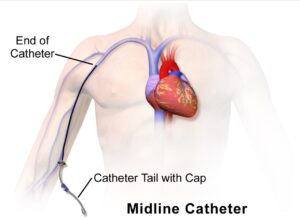
Bruce Blaus
Midline Catheter:
-
- Description: A longer catheter, usually 3 to 8 inches, inserted into a larger peripheral vein in the arm.
- Use: Intermediate duration therapy (1-4 weeks) for patients requiring IV therapy longer than a PIVC would allow. It is not long enough to warrant a central line (see below).
-
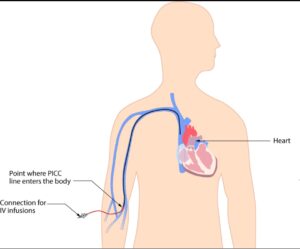
Glynda Rees Doyle and Jodie Anita McCutcheon
Peripherally Inserted Central Catheter (PICC):
-
- Description: A long catheter that is inserted through a peripheral vein,
- often in the arm, and advanced until the tip sits in a large vein in the chest.
- Use: Long-term IV therapy, such as chemotherapy, long-term antibiotic
- treatment, or total parenteral nutrition (TPN).
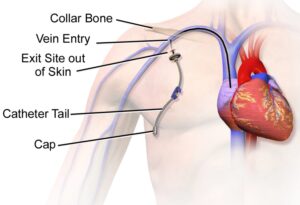
- Central Venous Catheter (CVC):
- Description: A catheter that is placed directly into a large vein, usually in the neck, chest, or groin.
- Use: Rapid fluid replacement, administration of medications, drawing blood samples, and measuring central venous pressure.
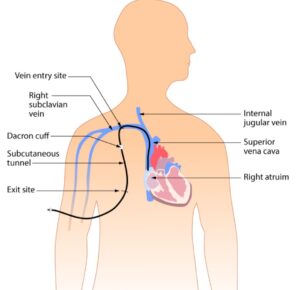
Tunneled Central Venous Catheter:
-
- Description: A CVC that is tunneled under the skin before entering the vein, which helps prevent infections.
- Use: Long-term IV therapy, especially when frequent access is needed over an extended period.
-
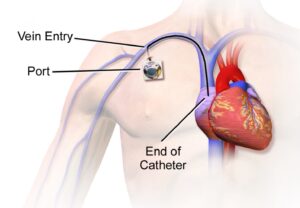
Bill Blaus Implanted Port (Port-a-Cath):
- Description: A small chamber implanted under the skin, usually in the chest, with a catheter connecting the chamber to a vein.
- Use: Long-term IV therapy where intermittent access is required, such as chemotherapy. The skin over the port can be punctured multiple times.
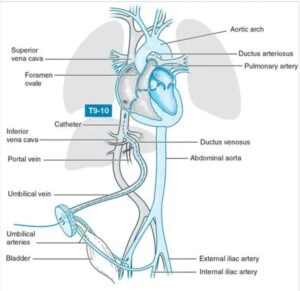
Umbilical Lines:
-
- Description: Catheters placed in the umbilical artery or vein of newborns.
- Use: Administration of medications and fluids, and monitoring in neonatal intensive care units.
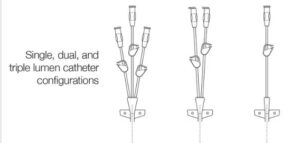
Multi-Lumen Catheters:
-
- Description: Catheters with multiple channels (lumens) allowing for simultaneous administration of different medications or fluids.
- Use: Situations where multiple treatments are required concurrently.
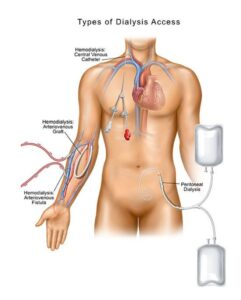
Dialysis Catheters:
- Description: Large-bore catheters designed for hemodialysis or apheresis.
- Use: Patients with kidney failure undergoing dialysis or those requiring apheresis.
- It’s essential to note that the choice of infusion line depends on the patient’s medical condition, the type of treatment required, the expected duration of therapy, and other individual factors. Proper care and maintenance of these lines are crucial to prevent complications such as infections, blockages, and dislodgements.
